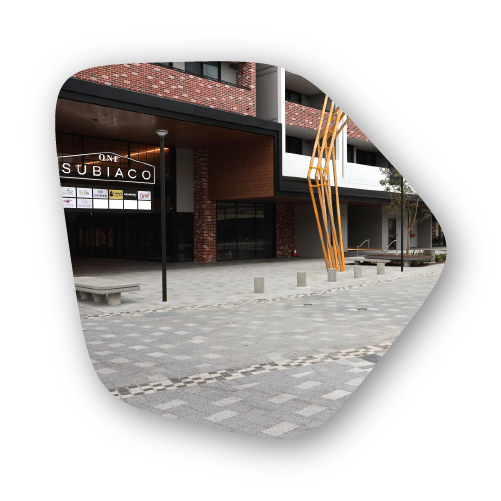
Here is a great informative guide on how to level and repair your pavers
Damaged pavers or ones that are looking worse for wear can negatively impact how your backyard looks and feels when spending time there. They can devalue your home and make it unsafe. One of the many wonderful things about pavers is that they are easy to install and equally as easy to relevel and repair if required. Here is how you can fix up the less than perfect paved areas at your place.
It’s a good idea to have a few things on hand when repairing or releveling your pavers. While you don’t need the following items, they can make the task much easier, and you’re more likely to get a professional finish at the end of it. They are:
- A level
- A stiff broom
- Paver sand
- Rubber mallet
- Sub-base material (crushed aggregate)
- Screed board
- Replacement pavers if required
- Placer rake
- Thin screwdriver or pry bar
- Before you lift the pavers, take photos
The last thing you want to do is rip up your pavers and then realise you don’t remember which way they were laid. Taking a picture can help you to relay them how they were and ensure that you get a professional-looking finish when you are done.
Once you’ve taken your photos, you can lift the affected area of pavers up
If there’s only one section or a few sections that are sunken or damaged, but the remaining pavers are in good condition and level, you can leave the good areas and work on the rest. This can save you a lot of time. It can be tricky to remove the initial paver, and this is where your prybar or thin screwdriver comes in handy. Place it into the paver gap where you want to remove the pavers and lift it out. If it isn’t moving, you can loosen it by gently tapping on the paver and the others around it with your rubber mallet.
Give your pavers a clean
If you haven’t made a habit of cleaning your pavers regularly, you should give them a thorough clean. This not only makes them look better but it can make it more straightforward to relay them. Gunk can inhibit how straight you get your pavers. The quickest way to do this without having to use cleaning products or much elbow grease is with a pressure cleaner. Using a low pressure should remove most of the dirt and debris although, if there are remaining stains, you may have to follow up with a suitable paver cleaner. You can find step by step information on how to do this here in our Helpful guidelines to follow when it comes to cleaning your pavers article.
Lay the subgrade material
Your subgrade material needs to be laid first; this provides a sturdy foundation. Spread it out using your placer rake, flatten and level with your screeding board. Dampen the subgrade and compact it.
Place the sand on
Scatter your sand over the subgrade material and even out using your screeding board. Ensure that your subgrade material and sand combined is not thicker than your pavers.
Level your sand
It’s vitally important that your sand is perfectly level as this is what your pavers will be laid onto. You can check this using your level and make any changes if needed before laying your pavers down.
Relay your pavers
Using your photo as a guide, you can then relay your pavers over the sand. To secure the pavers into position, lightly tap each one with your rubber mallet as you lay them. Ensure you have help to lift the pavers if they are large or heavy. Replace old or damaged pavers with new ones.
Brush sand into the paver joints
Once you have relayed your pavers and they are where you want them to be, you can then fill the paver joints with sand. You can do this by simply sprinkling the sand over the pavers and using a stiff broom, brush into the joints of the pavers until the sand is flush with the pavers in every joint.
You’re all done!
You’ve now relayed your pavers, and they should be looking a lot more even and fresh, but how do you keep them that way? You can ensure your pavers stay put by using a subgrade material that is suitable for paver laying and compacting it. Sometimes movement is unavoidable and can occur if there’s an extreme weather event or foundational issues with the home. If this is the case, it’s a good idea to get a professional out to take a look at the problem. They can advise you of the best route of action given the situation.
Fixing up sunken or broken pavers is a job that can be done by practically anyone. We hope this post has provided you with the information you need to revitalise your paved spaces.
If you have any questions about fixing up the pavers at your home, contact the professionals here at Bonita Stone. We produce stunning pavers so we can gladly help! Contact us on 0434 086 084 or check out our website to see what we’re all about.
DISCLAIMER: This is a basic guide only, and always check with your local council if you plan on making any type of modifications to your home.






